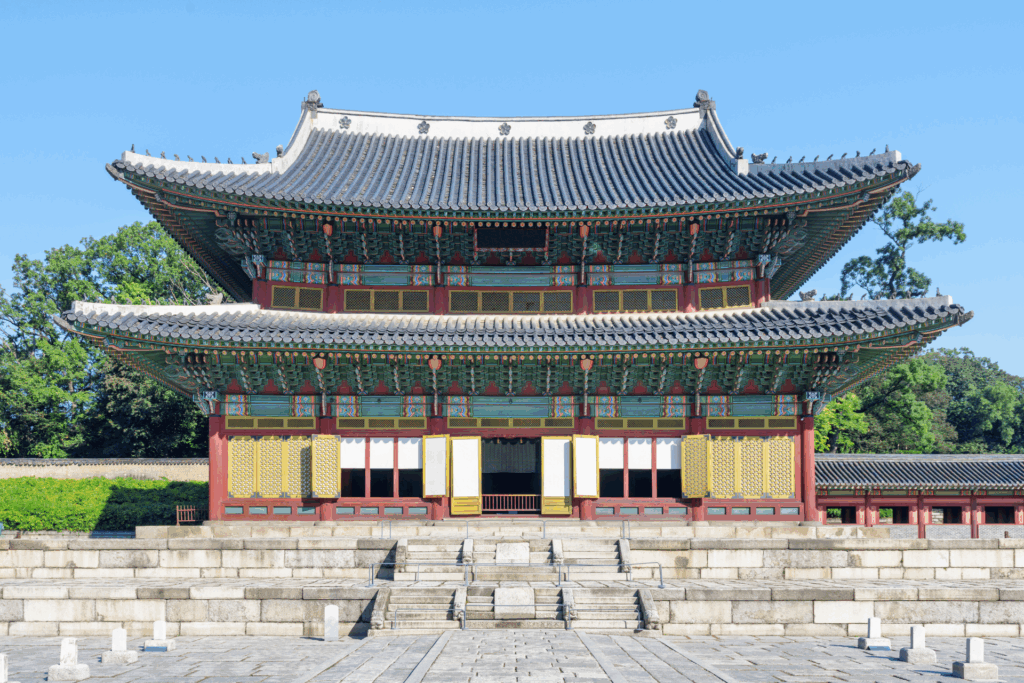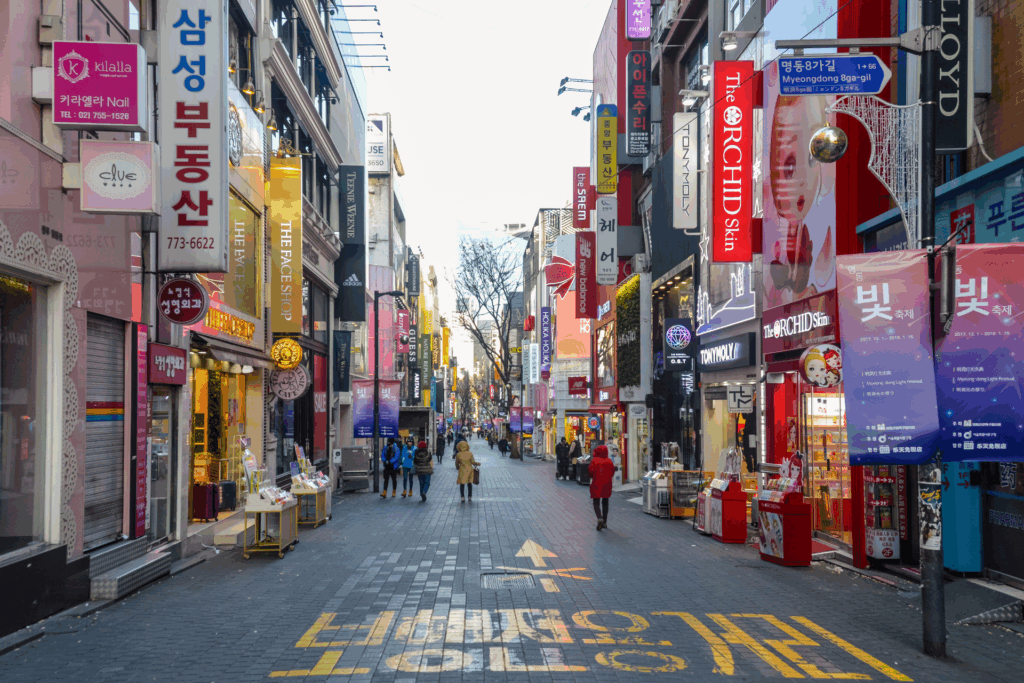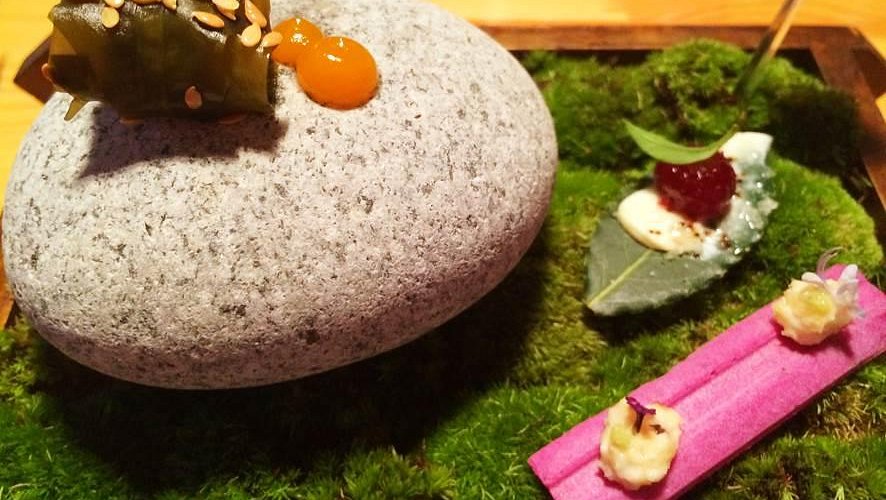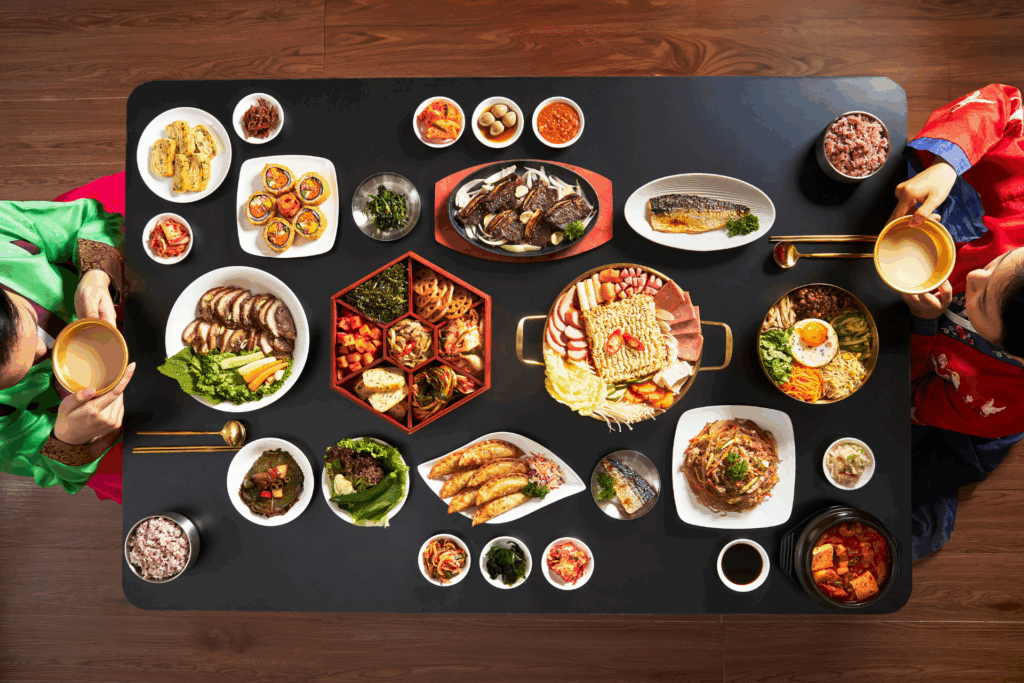August 15, 2025

Korean culinary culture stretches back centuries, shaped by dynasties, trade, and resilience. From the Three Kingdoms era to Joseon court rituals, food played a central role in social and spiritual life. The 20th century brought upheaval—occupation, war, and rapid modernization—and with that, a culinary rebirth that fused deep tradition with modern energy. Today, Seoul’s skyline—temples and hanoks* tucked beside gleaming towers—mirrors how the Korean culinary world honors the past while sprinting into the future.
*A honok is a traditional Korean house. Honoks are designed to harmonize with the natural environment and are known for features like ondol (underfloor heating) and maru (wooden-floored veranda). The design reflects a response to Korea’s distinct seasons, with features that provide both warmth in winter and cool spaces in summer.
Korean culinary history and influences

The roots of the Korean culinary identity are practical and cultural:
- Fermentation and preservation: Kimchi, doenjang, gochujang, and pickles developed as essential techniques to store food through long winters and became defining flavors.
- Royal and temple traditions: Court cuisine formalized multi‑course, seasonally precise meals; temple cuisine emphasized plant‑forward restraint. Both feed today’s tasting‑menu creativity.
- Regional diversity: Coastal Jeju differs from fertile Jeolla or mountainous Gangwon—regional produce, seafood, and traditions shape local plates.
- External influences: Proximity to China and Japan and later Western contact introduced new ingredients and methods that Korean chefs adapted into something uniquely local.
Across neighborhoods and countryside, the Korean culinary story is one of resourcefulness and refinement. Chefs now revisit fermentation, old recipes, and heirloom ingredients, using them as a base to imagine new dishes.
Where Korean Culinary has Landed Today

Seoul has emerged as a global food capital without losing its sense of place. Key trends:
- Heritage reimagined: High‑end kitchens translate royal and temple techniques into contemporary tasting menus—heavy on seasonality and subtlety.
- Farm‑to‑table and foraging: Chefs collaborate directly with small farms and foragers to highlight seasonal produce and wild flavors.
- Cross‑pollination: Korean ingredients meet French, Japanese, and modernist technique, creating hybrid dishes that feel fresh and rooted.
- Accessible excellence: Alongside Michelin tasting rooms, Bib Gourmand spots and night‑market stands serve brilliant, affordable food—proof the Korean culinary scene is for everyone.
Throughout the city you’ll find this balance: intimate neighborhood joints rolling out centuries‑old recipes, and sculpted tasting menus that make fermentation and seasonality headline acts. The phrase Korean culinary captures this full arc—from homestyle comfort to haute cuisine.
Michelin, The World’s 50 Best & what it means

International recognition has accelerated culinary tourism. The Michelin Guide’s Seoul and Busan editions and lists like The World’s 50 Best validate local innovation while pointing visitors to standout tables.
From the Worlds50Best Seoul discovery page, notable names to know include:
- Mingles
- Onjium
- 7th Door
- Eatanic Garden
- Mosu
- Soseoul Hannam
- La Yeon
- L’Amant Secret
- Alla Prima
- Kwonsooksoo
- La Cantina
- Muni
Many of these crossover with Michelin’s selections—stars, Bib Gourmand nods, and special mentions—illustrating how the Korean culinary scene spans high‑end innovation and cherished neighborhood plates. Next week (Part II) we’ll unpack the 2025 Michelin announcements: star changes, new Bib Gourmand entrants, and practical tips for booking and tasting.
Plan your culinary journey

A balanced Korean culinary itinerary mixes tastings and street life:
- One Michelin‑level tasting menu to see tradition reimagined.
- Market immersion at Gwangjang or Mangwon for iconic street eats.
- A regional night or two—Jeonju for bibimbap or Jeju for seafood and volcanic produce.
- Cultural context: a temple stay or hanok visit to pair food with history.
- Hands‑on: kimchi‑making or market‑to‑kitchen cooking class.
Ready to taste Korea? Sign up for our newsletter to get Part II in your inbox next week and more curated Korea content. If you’re serious about turning this into a trip, schedule a discovery call and we’ll design a custom Korean culinary itinerary: https://inspiredculinarytravel.com/contact
